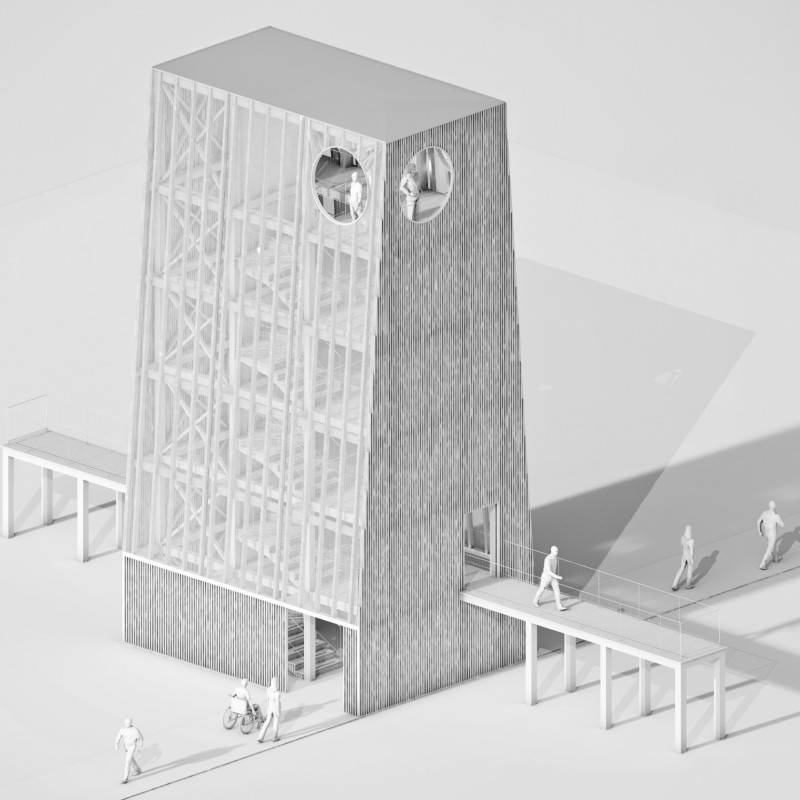5 key facts about this project
The tower's design is rooted in historical context, drawing inspiration from the forms of traditional windmills, which are emblematic of South Dakota’s agricultural history. By integrating local environmental factors into its architecture, the project emphasizes a connection to the land, promoting regional identity while enhancing tourism.
Design Features and Functionality
The observation tower features a unique combination of wood, steel, and glass, each selected for its structural and aesthetic qualities. The predominant use of wood imparts a natural warmth that resonates with the surrounding landscape. Steel provides the necessary structural integrity to support the height and form, allowing for expansive viewing areas. Glass openings in circular shapes create dynamic visual experiences, providing visitors with framed views of the natural surroundings.
The tower is designed to facilitate accessibility and user engagement. Walkways connect seamlessly to existing paths, ensuring that visitors can navigate the space comfortably. The observation deck allows individuals to immerse themselves in the landscape while fostering a connection to the region’s narrative through interpretive signage and educational elements.
Unique Aspects of the Design Approach
The architectural approach of the De Smet Observation Tower prioritizes sustainability and community involvement. The choice of materials reflects a commitment to using locally sourced resources, minimizing the project’s ecological footprint. The design promotes educational tourism, inviting visitors not only to admire the views but also to engage with the history and culture of De Smet.
The tower's form and function cater to a diverse audience, establishing itself as an integral part of the community while attracting tourists. The structure serves as a cultural hub that enhances local business opportunities and fosters community pride.
Explore the project presentation for more details on the architectural plans, architectural sections, and architectural designs that define this significant project. Discover the architectural ideas that shaped the De Smet Observation Tower, enriching your understanding of its role within the community and as a landmark of historical connection.


























